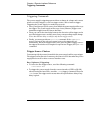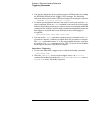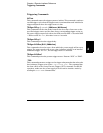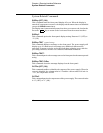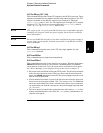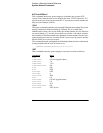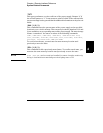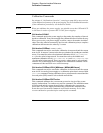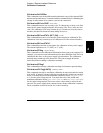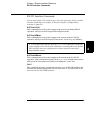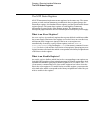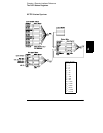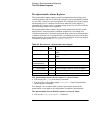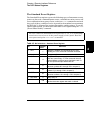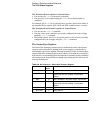
Chapter 4 Remote Interface Reference
Calibration Commands
97
4
CALibration:DAC:ERRor
This command corrects the differential nonlinearity error of the internal DAC
without an external meter. You must send this command before calibrating the
voltage. It takes about 30 seconds to execute the command.
CALibration:SECure:CODE <new code>
This command enters a new security code. To change the security code, first
unsecure the power supply using the old security code. Then, enter the new
code. The calibration code may contain up to 12 characters over the remote
interface but the first character must always be a letter.
CALibration:SECure:STATe {OFF | ON},<code>
This command unsecures or secures the power supply for calibration. The
calibration code may contain up to 12 characters over the remote interface.
CALibration:SECure:STATe?
This command queries the secured state for calibration of the power supply.
The returned parameter is ‘‘0’’ (OFF) or ‘‘1’’ (ON).
CALibration:STRing <quoted string>
This command records calibration information about your power supply. For
example, you can store such information as the last calibration date, the next
calibration due date, or the power supply’s serial number. The calibration
message may contain up to 40 characters. The power supply should be
unsecured before sending a calibration message.
CALibration:STRing?
This command queries the calibration message and returns a quoted string.
CALibration:VOLTage[:DATA] <numeric value>
This command can only be used after calibration is unsecured and the output
state is ON. It enters a voltage value that you obtained by reading an external
meter. You must first select the minimum calibration level (
CAL:VOLT:LEV
MIN
) for the value being entered. You must then select the middle and
maximum calibration levels (
CAL:VOLT:LEV MID
and
CAL:VOLT:LEV MAX
)
for the value being entered. Three successive values must be selected and
entered. The power supply then computes new voltage calibration constants.
These constants are then stored in non-volatile memory.



